25 F. high in the Twin Cities Friday.
31 F. average high on February 20.
38 F. high on February 20, 2014.
.7" snow fell at KMSP Friday morning.
15.5" snow since December 1.
29.4" normal snowfall between December 1 and February 20.
54.4" snow from December 1, 2013 to February 20, 2014.
A Snowy Disconnect
Storm. noun: a violent disturbance of the atmosphere with strong winds and usually rain, thunder, lightning, or snow.
Oh, I remember those! Vaguely. A faded memory, right up there with prom dates and fax machines.
During
a typical winter (ha!) MSP picks up 9 or 10 plowable snowfalls of 2
inches or more. So far this winter: 4 plowable snows, 2 of them in
November. Our biggest "storm"? An awe-inspiring 3.4 inches on December
27.
It seems a bit surreal to be staring out at subzero temperatures with a paltry 1 inch of snow on the ground.
February in Wichita.
And
just like last winter the jet stream has gotten stuck in a rut, a
groove; relatively dry, harmless clippers sailing over Minnesota,
intensifying into coastal monsters capable of burying Boston under 100"
of snow in the better part of 30 days. I still believe this is linked to
rapid warming of the Arctic - we'll see.
We're making up for a
milder than average December and January - and it now looks as if a
prolonged thaw may not arrive until the second week of March. We
struggle to top 0F Sunday; 2-3 more subzero mornings between now and
next Thursday. If anyone asks (doubtful) we've enjoyed 21 mornings of
negative fun. Last winter we endured 50 subzero lows. Feeling any
better?
* 36.5% of the Lower 48 states are snow-covered, according to
NOAA. That's up from 25% on January 20.
Some Notes On Cold Temperatures.
Some of the coldest mid-February temperatures over far northern
Minnesota since 1966? Here's an excerpt from Dr. Mark Seeley at
Minnesota WeatherTalk: "...
Seagull
Lake set a new record low with -38F; Brimson and Embarrass set new
record lows with a reading of -41F; Ely and Tower set new record lows
with -37F; Orr reported a new record low of -36F; and Littlefork
reported a record low of -34F. It is interesting to note that the
places in the state that set new cold temperature records this week were
areas that also have the deepest snow cover (a foot up to 30 inches).
From a historical perspective these are the coldest mid-February low
temperatures since those of 1966..."
Respect The Purple.
Purple, as in purple-pain. Everything shaded in light purple is
subzero; dark purple is seriously cold air. 2-meter NOAA temperature
forecast into early Tuesday from the 12km NAM. Animation: Ham Weather.
Weird Winter Weather Plot Thickens As Arctic Swiftly Warms.
For a few years now I've been describing what I perceive as changes in
the configuration of the jet stream over North America. At first I
thought I was hallucinating, but recent research seems to suggest that
rapid warming of the Arctic may, in fact, be impacting the shape and
persistence of upper level steering winds. Here's an excerpt of a post
at The Conversation and
Scientific American: "...
Other studies suggest
that Arctic warming in summer leads to a split jet stream—or two
separated rivers of wind—which tends to trap the waves. Those stationary
waves cause weather conditions to remain “stuck” for long periods,
increasing the likelihood of extreme heat waves, droughts and flooding
events in Eurasia and North America. Our own new work, published last
month in Environmental Research Letters, uses a variety of new metrics
to show that the jet stream is becoming wavier and that rapid Arctic
warming is playing a role. If these results are confirmed, then we’ll
see our weather patterns become more persistent..." (Image credit: NOAA).
Evidence For A Wavier Jet Stream. A summary of Jennifer Francis's latest research is
here.
Numbing Sunday.
Tomorrow will bring back memories of the January we never really had.
Under a cobalt-blue sky the mercury struggles to blip above zero as the
wind chill dips to -20 or colder. It's unusually cold for late February,
but hardly unprecedented. And the cold wave won't last long with a thaw
Monday night into Tuesday before a (weaker) push of Canadian air
arrives by midweek.
A Delayed Thaw?
Yesterday guidance was suggesting 30s by the first week of March. The
latest GFS model runs prolong the chill from the Upper Midwest and Great
Lakes into New England into March 6-8, but milder Pacific air pushing
into western Canada and the USA will eventually sweep in, probably
second week of the month. Map: GrADS:COLA/IGES.
In Like A Caribou.
Maybe I'm coffee-deprived, but March coming in like a lion just doesn't
cut it. I still don't see any significant storm risk/opportunity for
the next 2 weeks as prevailing jet stream winds blow from the
west/northwest; any big storms sailing well south of Minnesota. Which
has been the pattern for much of the winter, come to think of it.
Meteorology Professor Explains Extreme Weather Pattern. Speaking of a "stuck" jet stream,
WGRZ.com
in Buffalo has a story explaining how another unusually persistent jet
stream configuration is resulting in either record warmth + drought, or
mega-blizzards and polar cold; here's an excerpt: "...
Professor
Stephen Vermette coordinates the Meteorology and Climatology Program at
SUNY Buffalo State. He says we can blame these extreme weather patterns
on the jet stream. "It's been stuck in place and that's week after week
after week, especially February we've been getting some very cold
temperatures while places like Montana and Idaho and California, even
Alaska, are getting much warmer temperatures," he says. Vermette says
more than four-thousand warm temperature records have been set out west
just this month alone. But on our side of the map, there have been about
250 cold temperature records set..."
What Boston's Snow Crisis Can Teach Us About Solving Problems in New Ways.
CityLab has a fascinating article, including a few jaw-dropping statistics: "...
It’s like a math problem you got on a test as a kid, or a puzzle game for your iPhone:
Imagine
you’re the mayor of Boston. In the last 30 days, your city has seen a
whopping 6 feet of snow. How many cubic feet of snow have actually
fallen on your city, and where do you put it all? Answer: A little over 8
billion cubic feet of snow, and no darn idea..."
Photo credit above: "
Heavy
equipment works on a mound of snow that has been cleared from city
streets at a "snow farm" in Boston, Monday, Feb. 16, 2015."
(AP Photo/Michael Dwyer).
Ironic Captions Encouraged. Thanks to
Steve Breen at U-T San Diego for summarizing another all-or-nothing weather proposition.
Second Warmest January On Record, Worldwide. NOAA NCDC has an
interesting PDF with highlights of January, and the winter, to date. Only January 2007 was warmer than last month.
A Tale of Extremes.
California has been experiencing record warmth, while Boston is digging
out from a near-record winter of snow, a parade of coastal storms since
late January. I still suspect Minnesota's winter will be close to
average overall, colder than average weather in November and February
compensating for milder than normal weather in December and January.
2015 Picks Up Where 2014 Record Heat Left Off. Here's a snippet from a post at
Climate Central: "...
All three agencies ranked 2014 as the warmest year
on record by a slim margin, driven by the accumulation of heat-trapping
greenhouse gases in the atmosphere. Nine of the 10 hottest years on
record have all occurred in the 21st century, with the exception of the
blockbuster El Nino year of 1998. There hasn’t been a record cold year set since 1911, while during the same period there have been 19 record-warm years, according to a Climate Central analysis..."
Boston's Billion Dollar Blizzard.
Wait, people don't shop when there's 7-9 feet of snow on the ground? I
had no idea. The impact on America's economy probably won't be as severe
as last winter. Here's an excerpt of a post at
PYMNTS.com: "...
As
further evidence to those who want to make the case of how bad this
winter is, economic data suggest that this winter could cost the economy
nearly $2 billion in lost GDP, according to research firm Planalytics —
and winter has about a month more to go officially. This would be
largely caused by retail losses from having to close because of weather
conditions, re-routed travel patterns, public transportation that might
not be running at full capacity until Easter, as well as other business
headaches..."
Photo credit above: "
As snow
flurries begin to fall again, pedestrians walk through Boston City Hall
Plaza in Boston, Tuesday, Feb. 17, 2015. Nearly 8 feet of snowfall this
winter has paralyzed greater Boston's transit system, infuriating
commuters on and off the rails who may not see a return to normal for at
least a month." (AP Photo/Charles Krupa)
Second Greatest Great Lakes Ice Cover Since 1996. Number one was last year, with 92.5% coverage on March 6, 2014. According to
NOAA's Great Lakes Environmental Research Laboratory
the current number stands at 85.4% ice covered, and with cold weather
lingering into the end of next week I expect it to rise into the upper
80s, but probably not break the all-time record set in 1979.
Icy Perspective.
Great Lakes ice is a good proxy for the overall severity of a winter,
since it factors duration of bitter cold necessary to form thick lake
ice. Other cold years include 1979, 1994 and 2014. Source: NOAA.
Cyclone Lam and Cyclone Marcia: Twin Severe Storms A First For Australia. Dueling cyclones - a bit unusual down under; here's a snippet from
Sydney Morning Herald:
"Australia's northern coasts are being battered by two severe tropical
cyclones on Friday, the first time meteorologists have seen twin storms
of such intensity making near-simultaneous landfall.
Cyclone Lam
crossed the Northern Territory coast about 20 kilometres east of the
town of Milingimbi as a category 4 cyclone overnight, knocking out two
wind monitors in the process. It has been downgraded to a category 3 as
the storm moves inland..." (NASA).
Why Can You Fly Into A Hurricane, But Not A Thunderstorm?
Hurricane winds gradually build over time, but violent updrafts and
downdrafts, along with severe icing and hail over a short distance can
increase the stress - and risk - to aircraft. Here's an excerpt of a
good explanation at
Huffington Post: "...
In
short, it all boils down to the type of wind pilots face in either
scenario. In the case of a hurricane, a pilot navigates through a
“stratified area of horizontal winds,” which allows for a relatively
smooth ride. Pilots flying in a thunderstorm, on the other hand, are
faced with “strong vertical winds,” going upward and downward, which can
cause turbulence and other issues. Just check out a new video (above)
from The Weather Channel, which explains the difference between flying in the two weather conditions...."
Rocket Flown Through Northern Lights To Help Unlock Space Weather Mysteries.
Gizmag has the story; here's the introduction: "
The
northern lights are more than one of nature's most awe inspiring
sights, they are an electromagnetic phenomena that can adversely affect
power grids and communications and navigation systems. Researchers from
the University of Oslo have flown a rocket through the phenomena to take
a closer look with the aim of gathering data that will help in
predicting space weather..."
Image credit above: "
Artist's depiction of the ICI-4 rocket which launched today." (Image: Trond Abrahamsen, Andøya Space Center).
Apple Wants To Start Producing Cars As Soon As 2020.
Will they buy Tesla to jump-start their development efforts? It's no
longer about digital devices, soon it will be a digital lifestyle,
including new transportation options. Here's a clip from a story at
Bloomberg Business: "...
Tesla’s
success in creating a startup car company has shown that the
traditional barriers of entry into the auto industry aren’t as difficult
to overcome as originally thought, said one person, who asked not to be
identified because the matter is private. At the same time, automakers
have struggled to bring technical leaps to car development, something
that Silicon Valley is also seeking to accomplish. For example, Google
Inc. has invested in developing an autonomous vehicle since 2010..." (Image courtesy of
iJailbreak).
Coffee's Good For You! No, really. And if you don't believe the headline check out the story at
Bloomberg; here's an excerpt: "
A
couple of grandes a day may keep the doctor away, according to a panel
of government-appointed scientists charged with proposing changes to
U.S. dietary guidelines. Just go easy on the sugar. Three to five daily
cups of coffee aren’t associated with long-term health risks, the panel
said in a report Thursday, and correlate with reduced risk for heart
disease and type 2 diabetes. The panel helps the U.S. government
formulate dietary suggestions, guidelines that affect millions of
American diets..."
"Ice Volcano" Forms At Geyser In Upstate New York Park. I've heard of strange terms thrown around, but this is a new one.
NBC New York has the video and story; here's an excerpt: "...
The
arctic conditions have turned a geyser at a state park in upstate New
York into a five-story-tall "ice volcano." The geyser is in a pond near
the Glen Iris Inn at Letchworth State Park, which straddles the
Wyoming-Livingston county line 40 miles south of Rochester. Days of
subzero temperatures have formed a solid cone of ice several feet thick
with water still spouting out of the top..."
Image credit above: "Cold temperatures have transformed a geyser in western New York into an "ice volcano." (Published Thursday, Feb 19, 2015).
TODAY: Mostly cloudy, turning colder. Winds: NW 15. High: 19
SATURDAY NIGHT: Clearing, plenty cold. Low: -8
SUNDAY: Cold blue sky. Groundhog was right. Windchill near -20. High: 3
MONDAY: Cold start. Breezy, turning milder with increasing clouds. Wake-up: -9. High: 21
TUESDAY: Mild start, cooling down late. Wake-up: 20. High: 33 (falling by afternoon)
WEDNESDAY: Partly sunny. No relief yet. Wake-up: 7. High: 15
THURSDAY: Really enjoying February! Some sun. Wake-up: -1. High: 14
FRIDAY: Sunny intervals, light winds. Wake-up: 1. High: 20
Climate Stories....
Globola. If
it had a scarier name than climate change would we still be sitting on
our hands and "debating" the science? Maybe not. Who knows. But Jen
Sorensen nails it in
this comic.
6 in 10 Americans Have Given Climate Change and Health "No Thought". Here's the intro to a story at
weather.com: "Has climate change affected your area? You might not think it, but the answer is yes. "
Every
American, whether they know it or not, has been affected by climate
change," Edward Maibach, the director of George Mason University's
Center for Climate Change Communication, told weather.com. One of the
most prominent ways it is already impacting the U.S. is through health.
But most Americans have no concept of the complex intersection between
their health and the environment, a report, "Public Perceptions of the Health Consequences of Global Warming," published in October 2014, indicated..."

What If We Lost The Sky?
If it ever gets to the point where we need to take drastic action, ie
"geoengineering", or pumping chemicals into the stratosphere to try and
cool the Earth, other things may be lost, things we tend to take for
granted, like blue sky and starry nights. Here's a clip from an Op-Ed at
The New York Times: "...
If
we lose the night sky, he said, “we lose something precious and
sacred.” He believes whitening the daytime sky might result in “that
same loss of the sense of what’s vast,” a sense his team’s research
suggests is “one of the most important things that people build into
their lives...”
Fight Climate Change, Make Money. So says Virgin founder Richard Branson in an Op-Ed at
CNN; here's a clip: "...
Codifying
this goal into the international agreement that's taking shape would
send the strongest possible market signal that there's money to be made
in taking climate change seriously. A net zero position allows business
leaders to take short-term action and make long-term plans to develop
profitable ways to be competitive, even as they limit emissions,
increase efficiency and find strategies to offset the remaining
emissions that can't be avoided..."
The Pentagon and Climate Change: How Deniers Put National Security At Risk. The
Navy is no longer "debating" climate change - they can already see it
in their installations and ports around the world. Here's a clip of an
important story at
RollingStone: "...
Rear
Adm. Jonathan White, the Navy's chief oceanographer and head of its
climate-change task force, is one of the most knowledgeable people in
the military about what's actually happening on our rapidly heating
planet. Whenever another officer or a congressperson corners White and
presses him about why he spends so much time thinking about climate
change, he doesn't even try to explain thermal expansion of the oceans
or ice dynamics in the Arctic. "I just take them down to Norfolk," White
says. "When you see what's going on down there, it gives you a sense of
what climate change means to the Navy — and to America. And you can see
why we're concerned..."
Image credit above: Matt Mahurin.
Sea Ice Still Declining, Despite Antarctica's Gains.
Climate Central takes a look the global trends; here's a clip: "...
That
decline was also seen in every calendar month, with the largest decline
— of about 26,000 square miles per year — not surprisingly in
September, when the Arctic hits its annual summer minimum.
The data shows the cycle of warming and melting is self-reinforcing,
causing the global decline to accelerate. The ice has melted twice as
fast from 1996 to the present as it did from 1979 to 1996...."
Photo credit above: "
Sea ice and meltwater ponds in the Arctic, as seen from the USCG Icebreaker Healy." Credit: Jeremy Potter NOAA/OAR/OER.


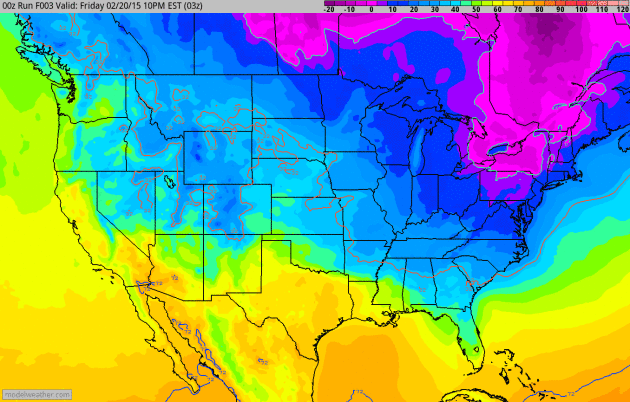
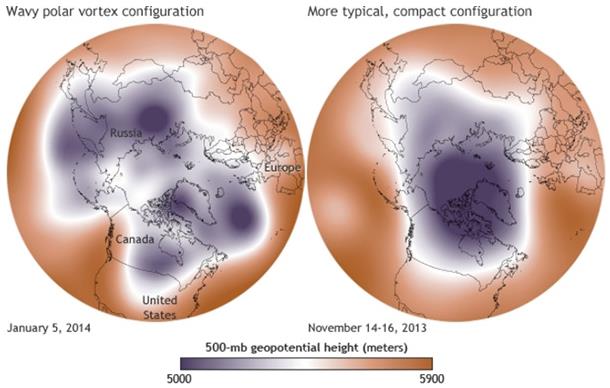
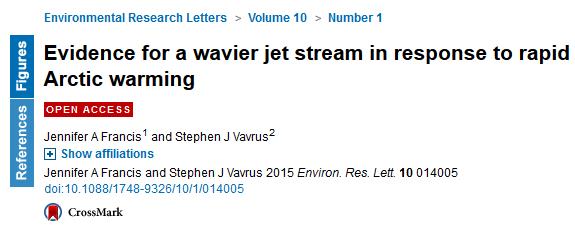
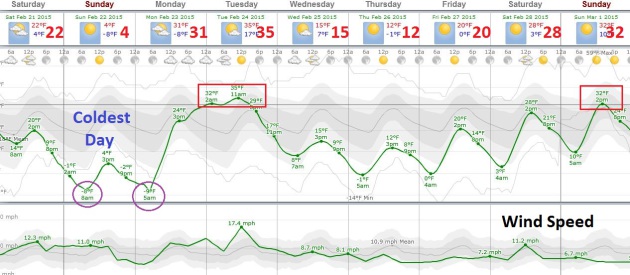

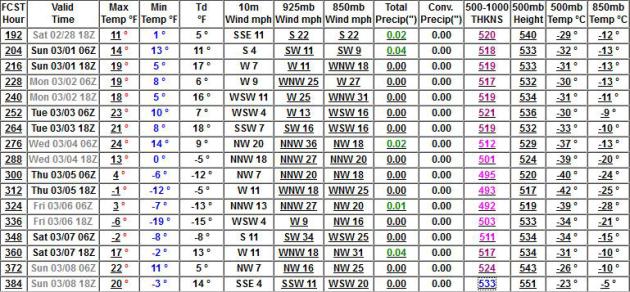

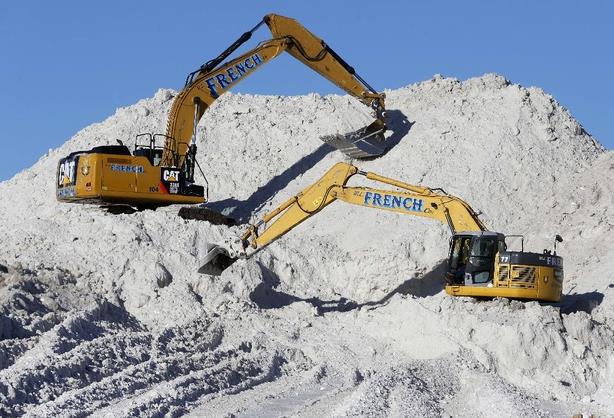



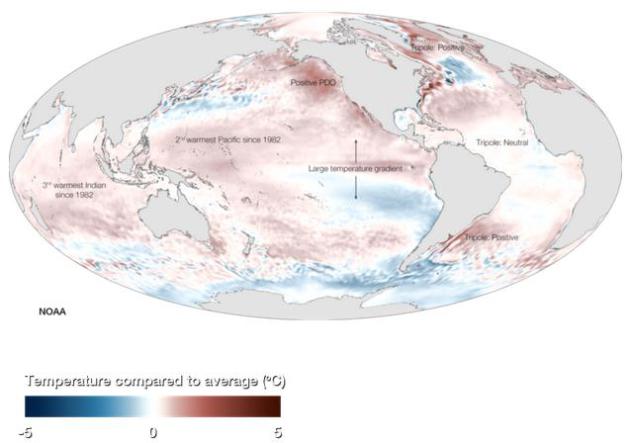
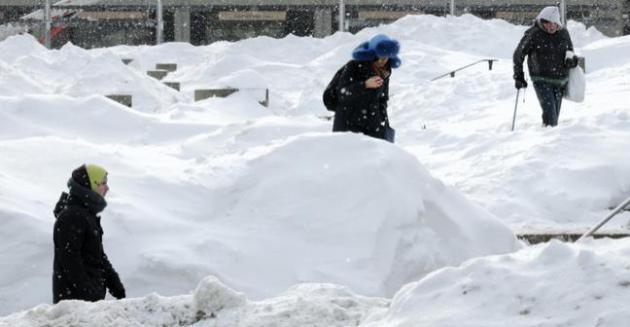
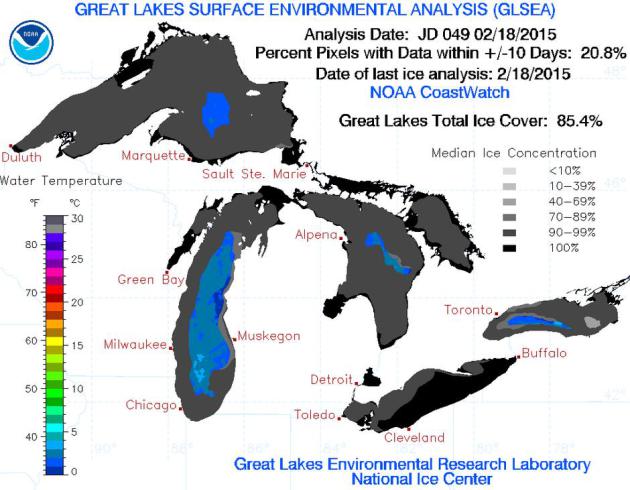
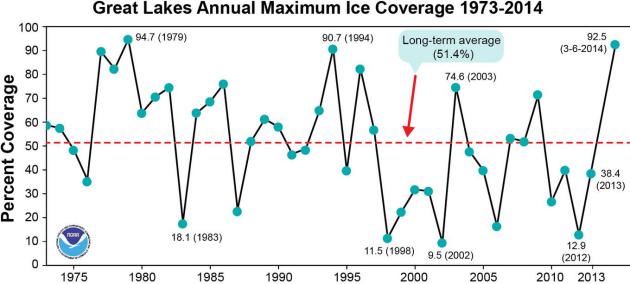
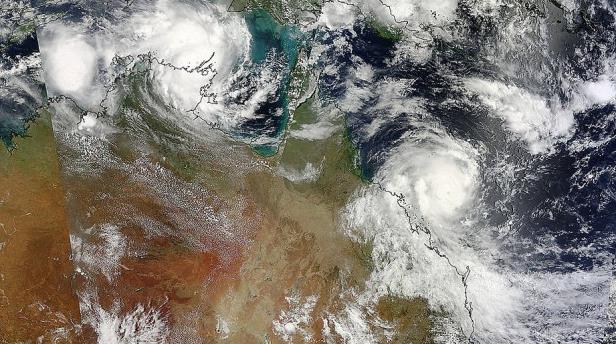
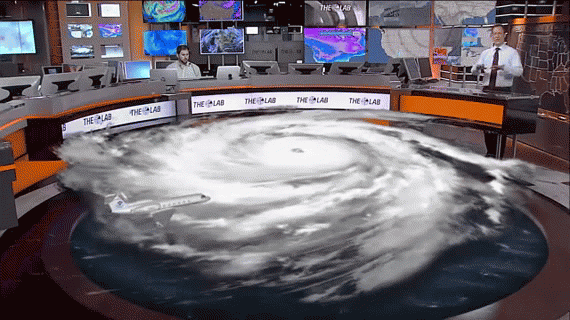
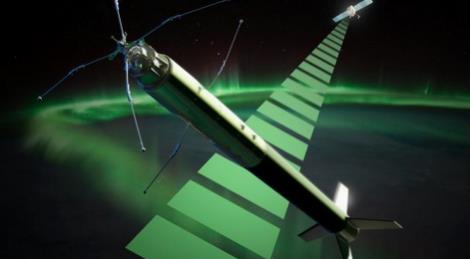



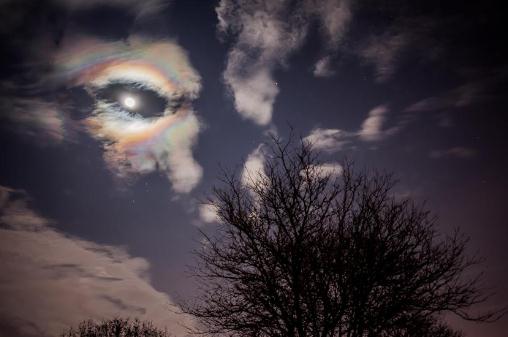
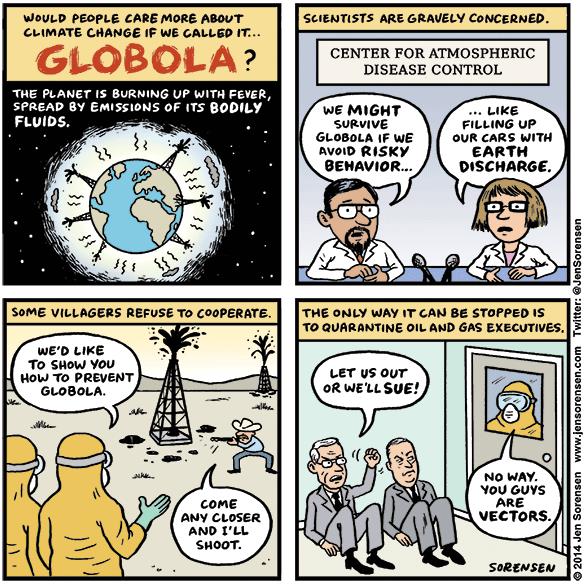

.jpg)

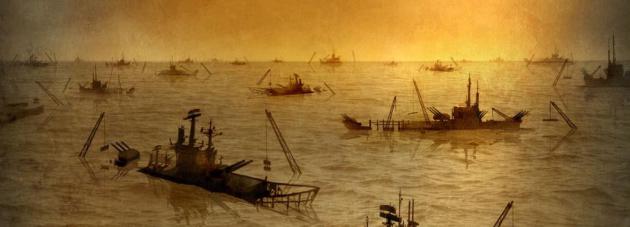


No comments:
Post a Comment